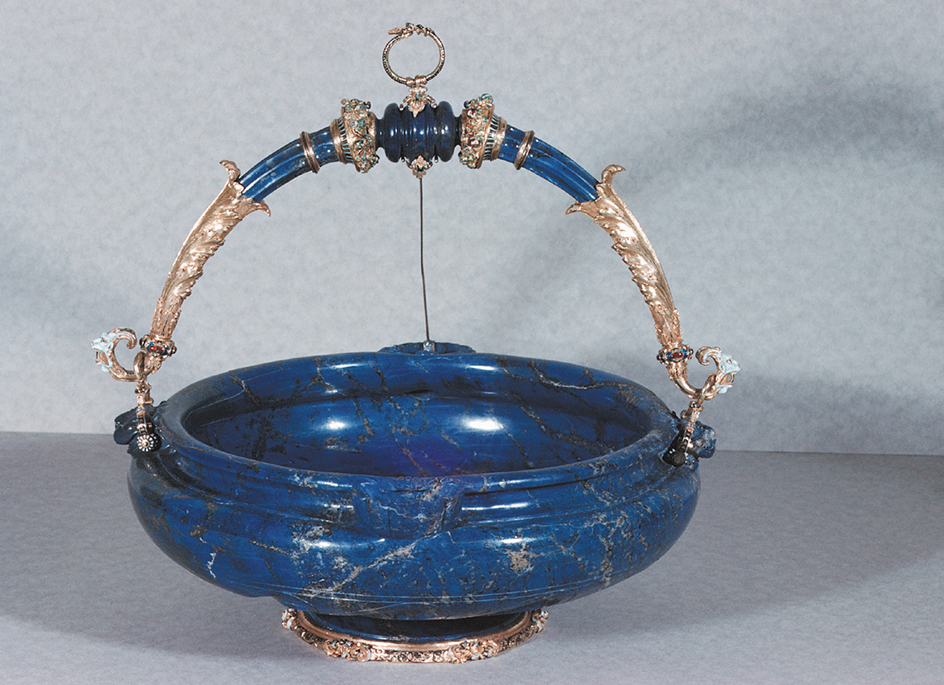Lapis lazuli << LAP ihs LAZ yuh ly or LAP ihs LAZ yuh lee >> is a beautiful azure-blue stone used as an ornament. It consists chiefly of lazurite, a mineral composed of sodium, aluminum, silicon, oxygen, and sulfur. Most lapis lazuli also contains such minerals as calcite, pyrite, and sodalite. Small amounts of yellow pyrite help to identify the stone as genuine lapis lazuli. But the presence of white calcite generally lowers the value of lapis lazuli. Large deposits of lapis lazuli are found in the Hindu Kush mountains of Afghanistan and at the southwestern end of Lake Baikal in Russia.

Lapis lazuli has been used in jewelry since ancient times. The tomb of King Tutankhamun, who ruled Egypt during the 1300’s B.C., contained many objects made of gold and lapis lazuli. Ancient peoples believed that lapis lazuli had medicinal value. They ground the stones to a powder, which was mixed with milk. The mixture was used as a dressing for boils and ulcers. Lapis lazuli was once ground to produce ultramarine, a blue pigment used in paintings.
See also Ultramarine.
